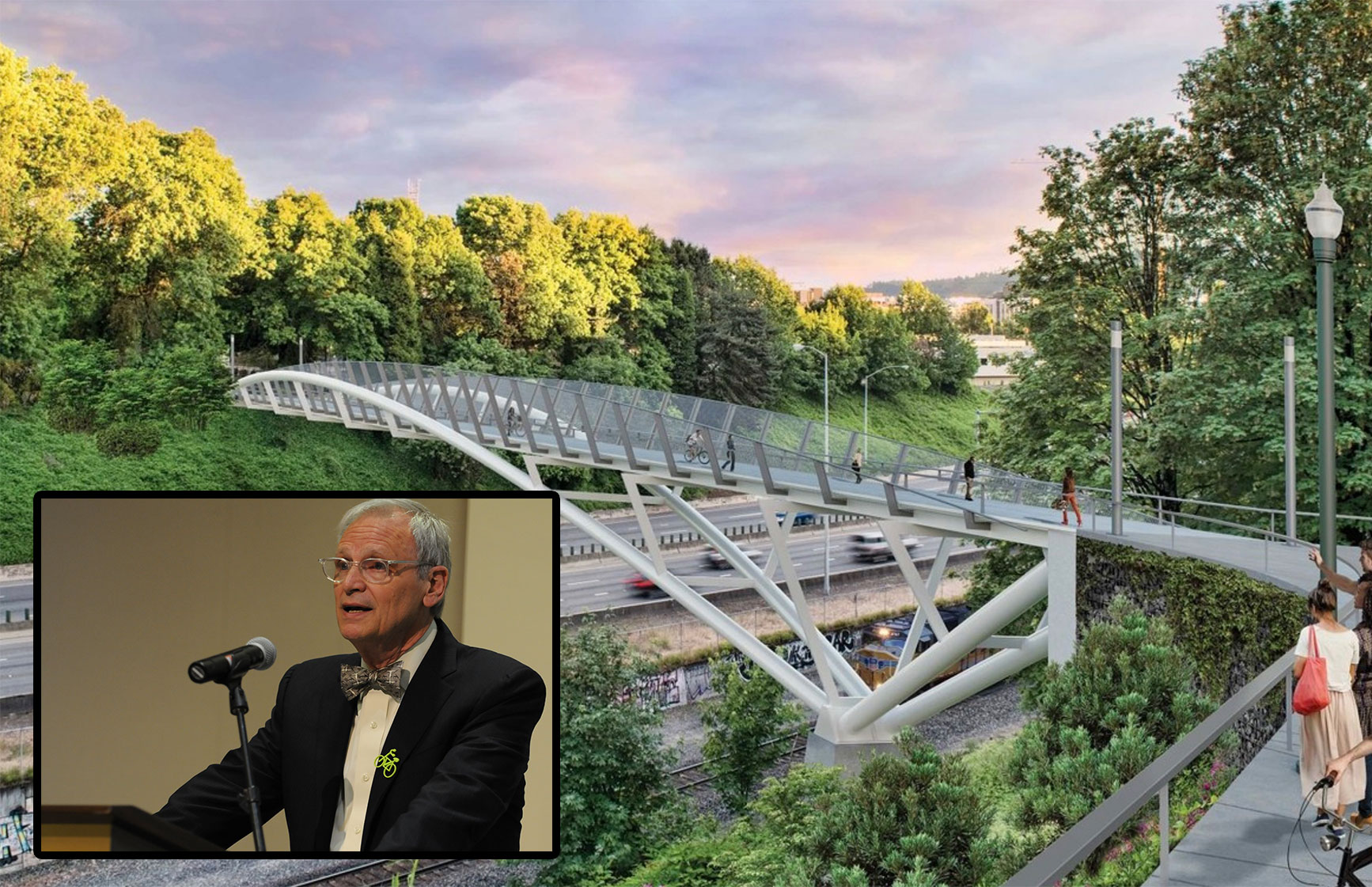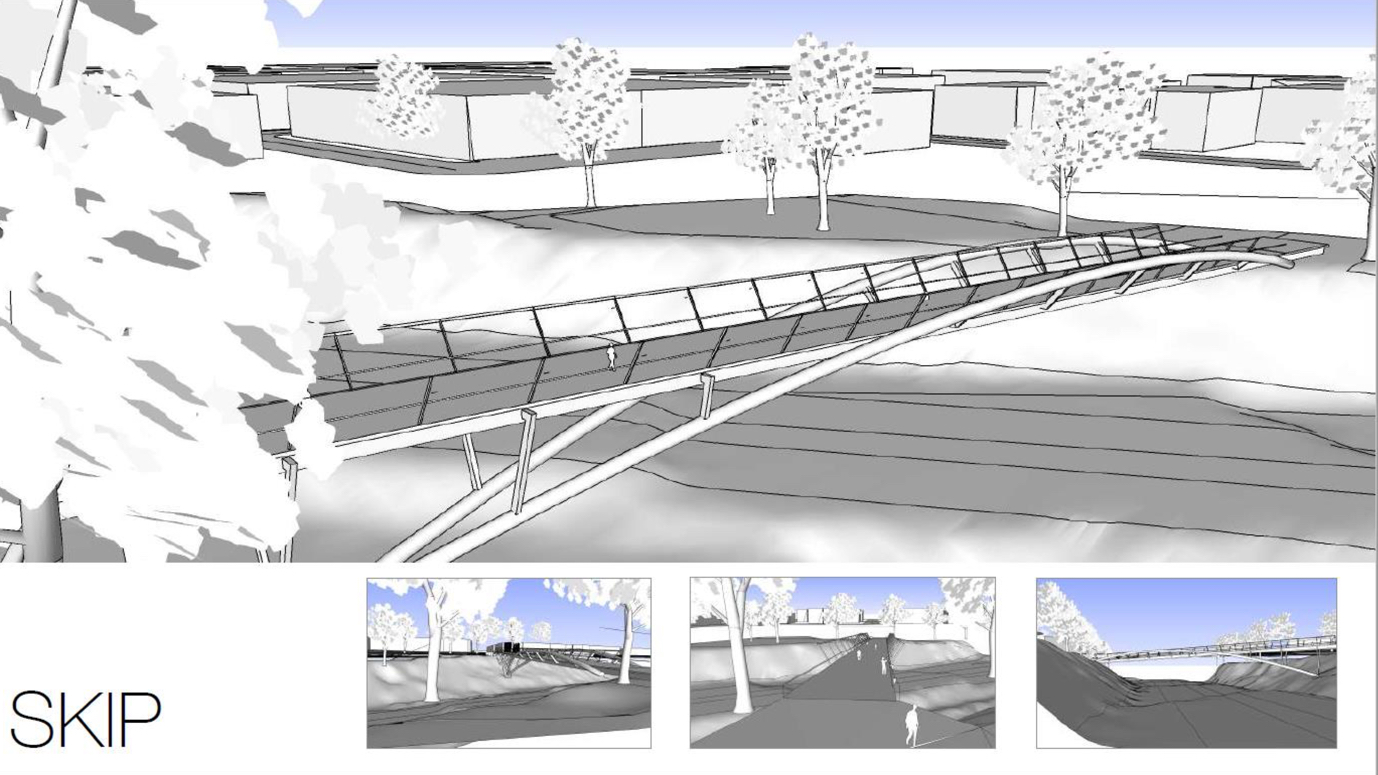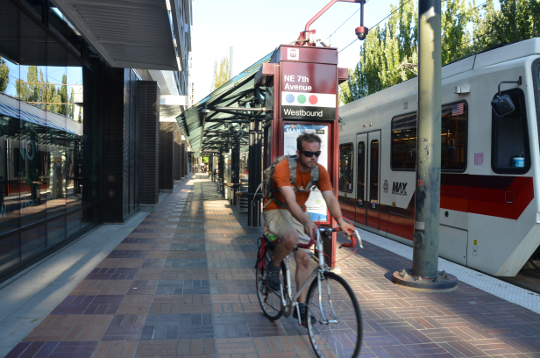At groundbreaking, Blumenauer says new carfree bridge over I-84 is part of bike-friendly legacy
The dream of a carfree bridge over Interstate 84 between the central eastside and Lloyd neighborhoods is older than some of the people who showed up for its groundbreaking this morning.








